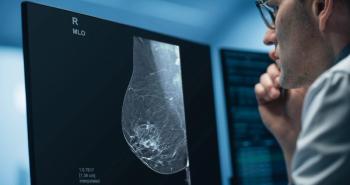
Digital Breast Tomosynthesis Doses Comparable to Mammography
Radiation doses from digital breast tomosynthesis is comparable to and could be lower than conventional two-view full-field digital mammography.
Radiation doses from digital breast tomosynthesis is comparable to and could be lower than conventional two-view full-field digital mammography, show findings of a study published in the April issue of
Researchers from Emory University School of Medicine in Atlanta, Ga., compared dose levels of digital breast tomosynthesis (DBT) and full-field digital mammography (FFDM) by using compressible water-oil mixture breast phantoms of varying sizes to determine how much radiation dose would be used for varying sizes and glandular compositions of breasts.
When comparing doses with the “average” breast (compressed thickness of 5 cm, 50 percent glandular fraction), a DBT acquisition resulted in 1.30 mGy, only an 8 percent higher mean glandular dose than the FFDM acquisition of 1.20 mGy. For a thicker breast sample (6.0 cm and 14.3 percent glandular fraction), a DBT acquisition was 2.12 mGy, which was 83 percent higher than an FFDM acquisition of 1.16 mGy.
RELATED:
Although the thicker breast had a higher dose, the researchers pointed out that this was still lower than the 3 mGy limit for a single-view conventional study, which is set by the Mammography Quality Standards Act.
Potentially, screening DBT could reduce the recall rate, reducing the number of repeat scans, which reduces women’s overall radiation dose rate.
Newsletter
Stay at the forefront of radiology with the Diagnostic Imaging newsletter, delivering the latest news, clinical insights, and imaging advancements for today’s radiologists.




























